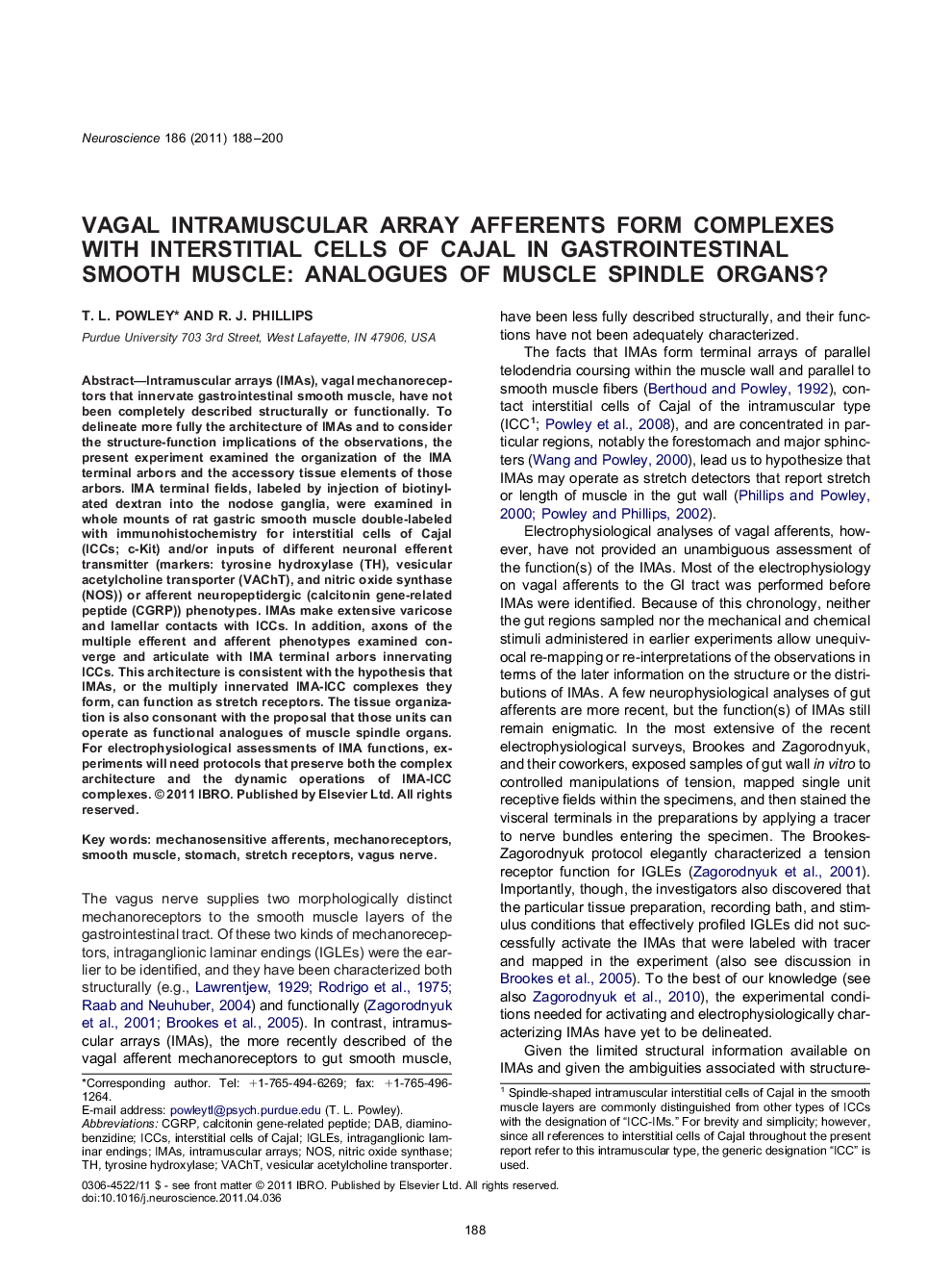| Article ID | Journal | Published Year | Pages | File Type |
|---|---|---|---|---|
| 4338881 | Neuroscience | 2011 | 13 Pages |
Intramuscular arrays (IMAs), vagal mechanoreceptors that innervate gastrointestinal smooth muscle, have not been completely described structurally or functionally. To delineate more fully the architecture of IMAs and to consider the structure-function implications of the observations, the present experiment examined the organization of the IMA terminal arbors and the accessory tissue elements of those arbors. IMA terminal fields, labeled by injection of biotinylated dextran into the nodose ganglia, were examined in whole mounts of rat gastric smooth muscle double-labeled with immunohistochemistry for interstitial cells of Cajal (ICCs; c-Kit) and/or inputs of different neuronal efferent transmitter (markers: tyrosine hydroxylase (TH), vesicular acetylcholine transporter (VAChT), and nitric oxide synthase (NOS)) or afferent neuropeptidergic (calcitonin gene-related peptide (CGRP)) phenotypes. IMAs make extensive varicose and lamellar contacts with ICCs. In addition, axons of the multiple efferent and afferent phenotypes examined converge and articulate with IMA terminal arbors innervating ICCs. This architecture is consistent with the hypothesis that IMAs, or the multiply innervated IMA-ICC complexes they form, can function as stretch receptors. The tissue organization is also consonant with the proposal that those units can operate as functional analogues of muscle spindle organs. For electrophysiological assessments of IMA functions, experiments will need protocols that preserve both the complex architecture and the dynamic operations of IMA-ICC complexes.
▶The structure of vagal afferent intramuscular arrays has not been fully described. ▶Tracers and immunohistochemistry were used to characterize these endings. ▶Intramuscular arrays form complexes with interstitial cells of Cajal. ▶These complexes are also innervated by multiple extrinsic afferents and efferents. ▶This architecture suggests that the complexes are stretch receptors.
